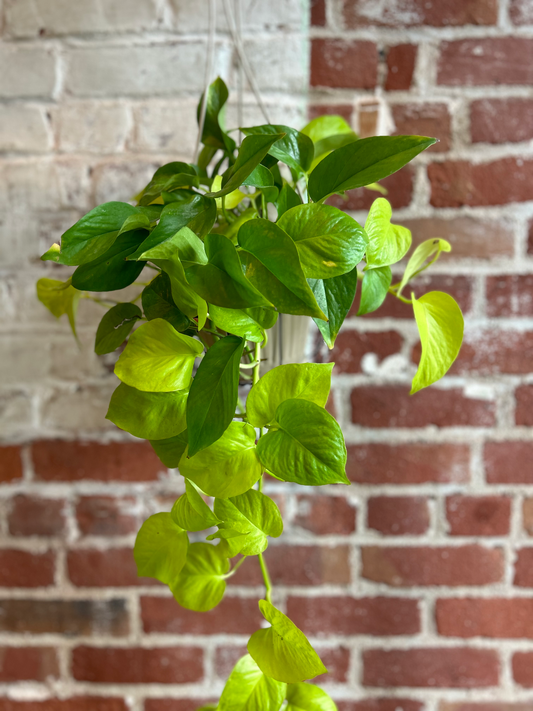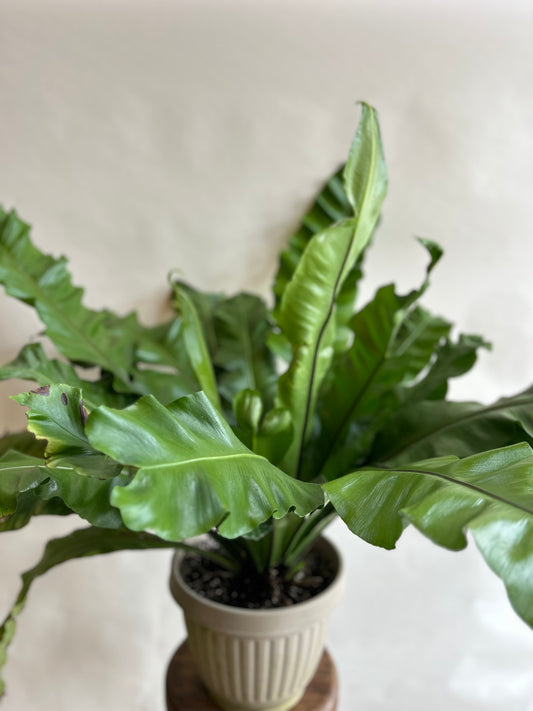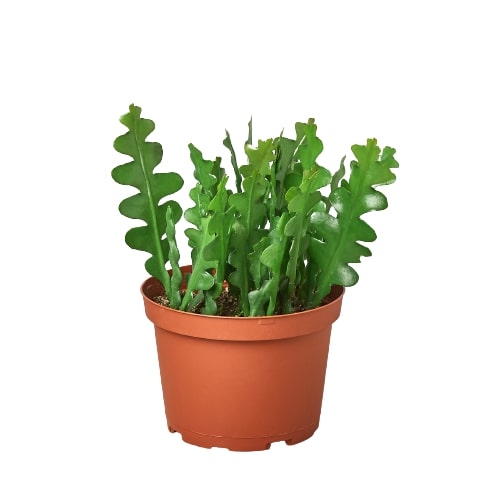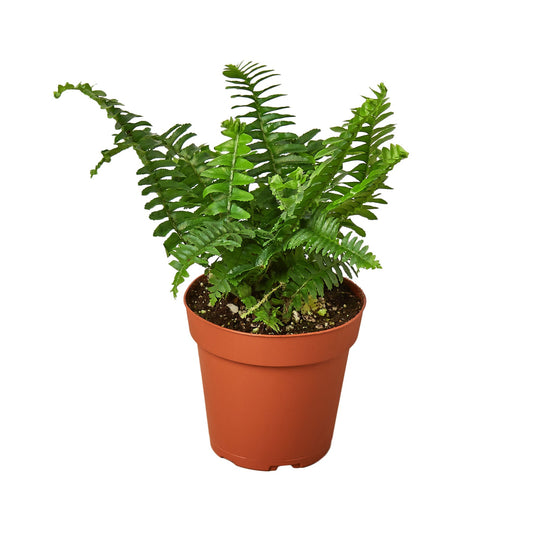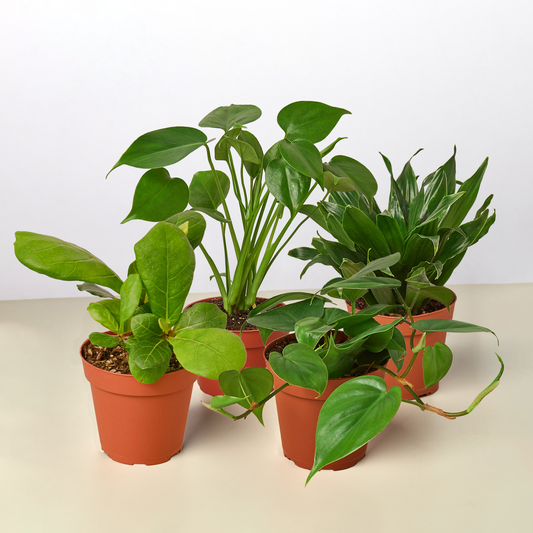Do Monstera Deliciosas Bloom?
Cafe Planta Team
Have you ever found yourself admiring the beauty of a Monstera Deliciosa and wondered if these stunning plants can bloom? You're not alone! This question pops up quite often among plant lovers, and it's fascinating to explore. Monstera Deliciosa, with its iconic split leaves, has become a favorite in homes across the globe, but its flowering habits remain a bit of a mystery to many.
In this post, we'll unravel the mystery of whether Monstera Deliciosas bloom, what their flowers look like, and what conditions they need for flowering. We'll also dive into some tips on how to care for these plants, deal with common issues, and integrate them into your home's design. So, if you're curious about your Monstera's potential to flower, stick around!
Understanding Monstera Deliciosa: An Overview
Before jumping into the specifics of blooming, let's take a moment to appreciate what makes the Monstera Deliciosa such a beloved houseplant. Native to the tropical forests of Central America, these plants are known for their dramatic, large leaves with unique perforations. These plants have earned nicknames like "Swiss Cheese Plant" due to their leaf patterns.
Monstera Deliciosa, like many tropical plants, thrives in warm, humid environments. This is something to consider when trying to replicate their natural habitat in your home. While they can tolerate less-than-ideal conditions, they truly flourish when given the right care. This means plenty of indirect light, moderate watering, and a touch of humidity.
But what about their blooms? In the wild, Monstera Deliciosa does produce flowers. These are not your typical garden blooms, but rather a creamy white inflorescence that resembles a calla lily. However, seeing these flowers indoors is rare due to specific environmental needs.
Do Monstera Deliciosas Bloom Indoors?
The short answer is yes, but with a big "if." Monstera Deliciosas can bloom indoors, but it's not a common occurrence. Blooming is more likely to happen if the plant has reached maturity, which can take several years, and if its environment closely mimics its natural habitat.
Achieving flowering indoors requires consistent care and optimal conditions. These plants need ample light, humidity, and space to grow. It's not just about giving them a sunny spot; they also need the right balance of nutrients and a stable environment. In nature, Monstera Deliciosa climbs up trees and receives filtered sunlight, so bright, indirect light is essential.
If you're keen on seeing your Monstera bloom, patience and care are your best allies. Some plant parents have reported blooms after several years of dedicated care, so while it’s a challenge, it’s not impossible. Consider it a long-term project in plant care, with the potential reward of a unique and unexpected flower.
What Does a Monstera Flower Look Like?
If you’re curious about what these elusive blooms look like, you’re in for a treat. The Monstera flower is not your typical floral display of petals and colors. Instead, it features a spathe and spadix, similar to what you'd see in peace lilies or calla lilies.
The spathe is a creamy white sheath that wraps around the spadix, a fleshy spike where the actual flowers are located. This structure may not scream "flower" in the traditional sense, but it has its own unique charm. The flower isn't just for show either; it can eventually give way to fruit, which is where the "deliciosa" part of its name comes from.
The fruit of the Monstera is edible when fully ripened, resembling a cross between a banana and pineapple in taste. However, it’s important to note that the fruit should only be eaten when it's completely ripe, as unripe fruit can be toxic.
Creating the Perfect Environment for Blooming
If you're determined to coax a flower out of your Monstera, creating the right environment is crucial. Here are some steps to help your plant thrive and possibly bloom:
- Light: Ensure your Monstera receives bright, indirect sunlight. Direct sunlight can scorch the leaves, while too little light can hinder growth.
- Humidity: Mimic the plant's natural tropical environment by maintaining humidity levels around 60-70%. A humidifier can be a good investment, or you can mist the leaves regularly.
- Temperature: Keep the temperature between 65-85°F (18-29°C). Avoid cold drafts and sudden temperature changes.
- Watering: Water when the top inch of soil feels dry. Overwatering can lead to root rot, so ensure your pot has drainage holes.
- Feeding: Use a balanced fertilizer during the growing season (spring and summer) to provide essential nutrients.
Consistency is key, so try to maintain these conditions as steadily as possible. Remember, patience is vital when it comes to waiting for blooms.
Common Challenges and How to Overcome Them
Caring for a Monstera Deliciosa isn't without its challenges, especially if you're aiming for flowers. Here are some common issues you might face and how to tackle them:
Yellowing Leaves
Yellow leaves can indicate overwatering, insufficient light, or nutrient deficiencies. Check your watering schedule and ensure your Monstera is getting enough light. If the issue persists, consider checking the soil's nutrient levels and adjusting your fertilizing routine.
Pest Problems
Like many houseplants, Monsteras can fall prey to pests like spider mites, aphids, and thrips. Regularly inspect your plant and clean the leaves with a damp cloth. If pests appear, try using neem oil or insecticidal soap to keep them at bay.
Leaf Browning
Browning edges can result from low humidity or inconsistent watering. Increase humidity around the plant and ensure a regular watering schedule. Avoid letting the soil dry out completely between waterings.
By addressing these issues promptly, you can help keep your Monstera healthy and on track for potential flowering.
Integrating Monstera Deliciosa into Your Home Decor
Beyond their potential to bloom, Monstera Deliciosas are highly valued for their aesthetic appeal. Their large, perforated leaves make a bold statement, adding a touch of the tropics to any room.
Here are a few ideas for incorporating Monstera into your home decor:
- Statement Plant: Use a Monstera as a focal point in a room. Its large size and unique leaf shape can draw the eye and complement minimalist or bohemian styles.
- Mixed Plant Display: Pair your Monstera with other tropical plants like snake plants or pothos for a lush, layered look.
- Decorative Pots: Choose pots that match your interior design. Ceramic pots with patterns or sleek modern designs can enhance your Monstera's visual impact.
- Vertical Space: If you're short on floor space, consider using plant stands or hanging baskets to elevate your Monstera.
Integrating a Monstera into your decor isn't just about aesthetics; it can also improve air quality and add a sense of tranquility to your home.
Propagation: Growing Your Monstera Family
If you’ve fallen in love with your Monstera Deliciosa, you'll be pleased to know they’re relatively easy to propagate. This process can help you grow more plants for your home or share them with friends. Here's a simple step-by-step guide:
- Choose a Healthy Stem: Look for a stem with at least one node (a small bump where leaves and roots grow).
- Make the Cut: Using sharp, clean scissors, cut just below the node. Ensure the cutting has 1-2 leaves.
- Root in Water: Place the cutting in a jar of water, ensuring the node is submerged. Change the water every few days to prevent bacteria build-up.
- Transplant to Soil: Once roots are about an inch long, plant the cutting in a pot with well-draining soil.
- Provide Care: Treat your new Monstera like the parent plant, providing adequate light, water, and humidity.
With a little patience, you'll soon have a thriving Monstera family!
Monstera Deliciosa and Pets
While Monstera Deliciosa is a beauty to behold, it’s important to be aware that the plant is toxic to pets if ingested. The plant contains calcium oxalates, which can cause irritation in the mouth and digestive system.
If you have pets at home, consider placing your Monstera out of their reach. Hanging baskets or elevated plant stands can be great solutions. Alternatively, you might train your pets to avoid the plant or use pet deterrent sprays to keep them away.
Keeping your pets safe while enjoying the beauty of your Monstera is entirely possible with a little planning and precaution.
Final Thoughts
Monstera Deliciosas are more than just a pretty face in the plant world. While their flowers are a rare treat for indoor growers, their stunning foliage and easy-care nature make them a rewarding addition to any home. By providing the right conditions and care, you can enjoy a healthy, vibrant Monstera.
At Cafe Planta, we're passionate about helping you nurture your plant collection. Whether you're looking for new plants, care tips, or just want to connect with fellow plant lovers, we're here for you. Feel free to email us or reach out on Instagram. Let's grow together!


